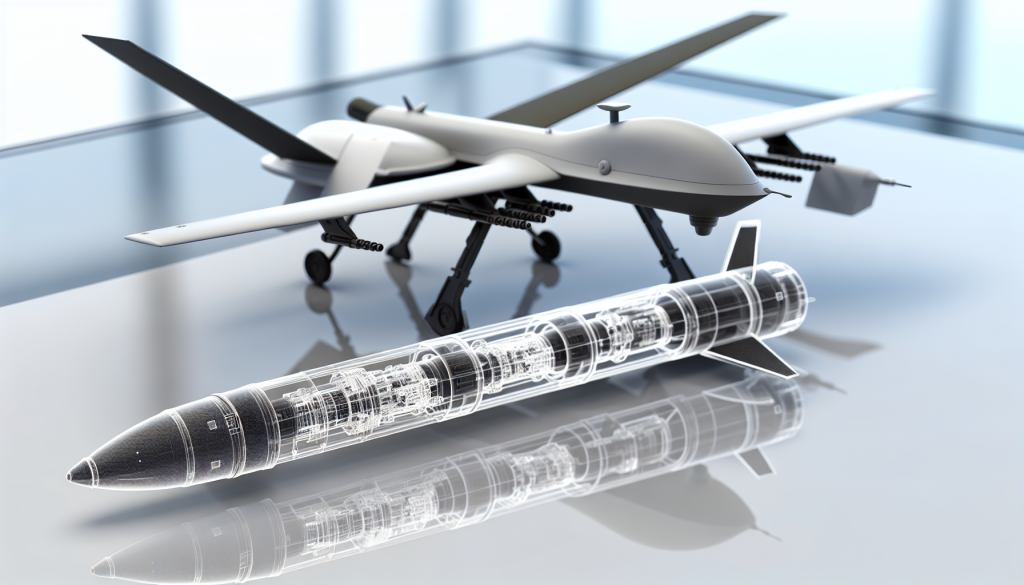Unveiling the Components of Destruction: Insights from Ukraine’s Intelligence
The ongoing conflict in Ukraine has drawn international attention not just due to its geopolitical implications, but also because of the sophisticated weaponry employed in the skirmish. In a recent update, the Main Intelligence Directorate of the Ministry of Defence of Ukraine has published crucial information regarding 68 new components discovered in missiles and UAVs utilized by Russia against Ukraine. This revelation is particularly timely, as it sheds light on the technological backbone of weaponry used in modern warfare.
A Look into the Components
In the “Components in Weapons” section on the War&Sanctions portal, various intricate details about these components have been made available. Among the armed systems detailed in this update are notable missiles like the 9M727 “Iskander-K” cruise missile and the aeroballistic Kh-47M2 “Kinzhal.” These high-tech weapons are capable of striking critical infrastructure, making them significant threats in any military engagement.
Additionally, the report mentions North Korean ballistic missiles such as the KN-23 and KN-24. These developments highlight the international web of military support that enhances Russia’s offensive capabilities. Notably, the strike UAV “Geran-2” (Shahed-136), used in previous offensives, is also included, showcasing the diverse arsenal deployed in hostile operations.
Recent Attacks and Their Impact
The intelligence briefing comes against the backdrop of a significant escalation in hostilities, specifically a massive combined air attack executed on October 22. This strike targeted Ukraine’s energy sector and civilian areas, demonstrating a strategic choice to weaken both military infrastructure and the morale of the civilian populace. The analyses of missile components serve to unravel the operational mechanics behind these brutal strikes, offering insights that could inform both defense strategies and international response.
Global Supply Chains of Warfare
One alarming aspect highlighted by this intelligence is the realization that, despite claims of Russian self-sufficiency in military production, their missiles and drones are still reliant on foreign components. Chips and technology from American, Chinese, Swiss, Japanese, Taiwanese, and other manufacturers continue to enable these systems. This reliance underscores a broader narrative about the vulnerabilities present in modern warfare—where supply chains stretch across continents, making the battlefield a truly global affair.
Partnerships That Fuel Conflict
The investigation also brings attention to the vital role of partnerships in this conflict. Two of the six strike systems utilized in the recent attack are supplied to Russia with notable support from strategic allies, namely Iran and North Korea. This partnership not only extends the operational reach of Russian forces but also poses significant risks to regions far beyond Ukraine. The geopolitical ramifications resonate in the Indo-Pacific region and the Middle East, as the illegal transfer of military technology can destabilize other nations.
The Call for Global Action
This assessment articulates a pressing need for the international community to reassess current global export-control practices. In the message accompanying the update, officials stress that existing intergovernmental cooperation mechanisms require enhancement to address these unconventional wartime challenges. The ramifications are increasingly evident, with the potential for these components to be utilized in conflicts worldwide.
Technological Disarmament Efforts
The “Components in Weapons” section ultimately serves a dual purpose, documenting a staggering 5,200 components across 179 weapon samples. Not only is this a catalog of destruction, but it also represents a clear call for technological disarmament of Russia. By making this intelligence public, Ukraine aims to rally global support in curtailing the flow of military technology that fuels conflict and escalates human suffering.
In a time where weapons systems and components are deeply intertwined with international relations, this intelligence update provides a sobering glimpse into the mechanics of modern warfare while advocating for a concerted global effort towards peace and disarmament.

